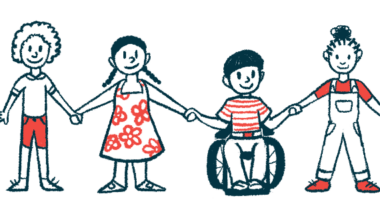Diverse side effects found in study for PH children on off-label meds
More research may help move some treatments from off label to approved

Children with pulmonary hypertension (PH) may experience a wide range of side effects from medications being used off label, and such reactions may differ from those affecting adults, a survey study found.
“Further research is needed to better understand the clinical implications of these side effects,” the researchers wrote, noting that “benefit is frequently seen” by clinicians using such medications in children on an ad-hoc basis.
The team noted the “large, unseen economic, emotional, and time burden of caring for a child living with PH.”
A better understanding of these clinical implications could one day help move some medications from off-label to approved treatment for children, they said.
The study, “Quantifying side effects and caregiver burdens of pediatric pulmonary hypertension therapies,” was published in the journal BMC Pediatrics.
Understanding the effects of off-label meds in children
PH happens when there is too high a blood pressure in the lungs. It occurs when the blood vessels that carry blood from the heart to the lungs become narrowed or blocked, making it harder for blood to flow through them.
In children, PH often develops as a result of a congenital heart defect that is present from birth. Other conditions, such as Down syndrome, also can increase a child’s risk of developing pulmonary hypertension.
Treatments to help manage the symptoms of PH, and maintain or even improve quality of life, have been approved for use in adults. However, evaluations of dosing side effects and outcomes in children are lacking.
Nonetheless, these medications are oftentimes used off label in this patient population.
Now, a team of researchers in the U.S. surveyed a group of parents and caregivers to assess side effects experienced by children who are being treated for PH.
Participants were recruited online through a Facebook group called “Families of children with pulmonary hypertension.” All of the parents and caregivers completed a survey about the type of treatments used by the children under their care.
At the time — which was somewhere near the end of 2021 and the beginning of 2022 — the group had 1,593 members. Many engaged in daily interactions with other members to share their experience caring for a child with PH and to learn more about available treatments.
A total of 139 parents and primary caregivers completed the survey. The vast majority (85.6%) lived in the U.S., and almost all (89.2%) were the child’s mother. Nearly two-thirds (60.5%) of the participants had achieved a college degree or higher.
Nearly half (49.6%) of the children had received a diagnosis of PH before age 1. A total of 58.3% were offered genetic testing to determine the cause behind the child’s PH.
There were 76 boys and 63 girls among the patients, and 12 (8.6%) also had a diagnosis of Down syndrome. Many (48.2%) were born with a congenital heart defect.
About 90% of the children used one or more medications to treat their PH, with 72 (51.8%) using three or more. Moreover, 84 children (60.4%) used supplemental oxygen, either continuously, during the night, or as needed.
On average, parents and caregivers reported 4.4 side effects from Remodulin (treprostinil) over the previous six months. Next were Uptravi (selexipag), with an average of 2.85 side effects, Adcirca (tadalafil) with 2.4, and Revatio (sildenafil) with 1.61.
Letairis (ambrisentan), Tracleer (bosentan), and Opsumit (macitentan) had on average fewer than one reported side effect.
The most common side effects were flushed skin (18.6%), headache or feeling dizzy (11.4%), nasal congestion (8.3%), joint or muscle pain (8.1%), and nausea (7.9%).
Medications to treat PH resulted “in a wide range of side effects experienced by children,” the researchers wrote. For some of these medications, the number of side effects appears to be higher in children than adults, the team noted.
These reported differences in side effects among children and adults living with PH highlight important considerations for physicians as they prescribe these medications in an attempt to balance the management of disease symptoms and quality of life experiences.
Almost all children (95.7%) were receiving routine care at a specialty children’s hospital. Their doctors included pediatric cardiologists (40.3%), pediatric pulmonologists (7.2%), a combination of both (43.9%), or general PH specialists (7.2%).
However, 81.3% of parents and caregivers had to travel 20 miles or more for their child to receive routine care. For more than two-thirds (68.3%), travel time took one hour or longer. Twelve of the families (8.6%) families said they moved to be closer to where routine care is provided.
“Unseen familial burdens accompany a child’s diagnosis of PH and should not be overlooked,” the researchers wrote.
The team said their study aimed to quantify the side effects of PH treatments on children with the disease with an aim of “moving towards labeled usage of these therapies rather than post-hoc off-label usage.”
“These reported differences in side effects among children and adults living with PH highlight important considerations for physicians as they prescribe these medications in an attempt to balance the management of disease symptoms and quality of life experiences,” the researchers wrote.
Any parent or caregiver who completed the survey received a $20 gift card.








